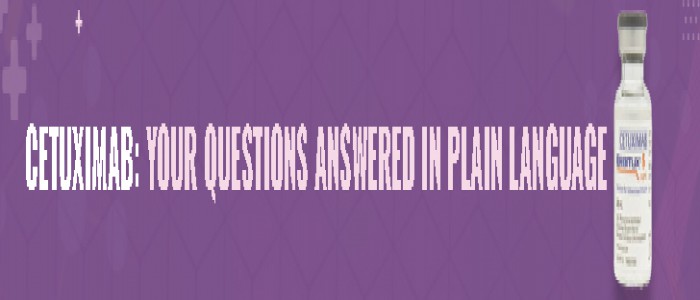Ruthvik Majety
19 December, 2023
Brief history of Cetuximab
As part of a major research exercise in understanding cellular signalling mechanisms in the 1980s, a group under Dr. Michael Waterfield in Imperial Cancer Research Fund (now part of cancer research UK) found EGFR to be the cell receptor that binds to EGF (Epithelial Growth Factor) that leads to cell proliferation. This research led to an idea of looking for ways to block this receptor, which would curtail the growth of cancer. There were many anti-EGFR monoclonal antibodies found in the rat studies and Cetixumab was found to be having one of the highest efficacy for EGFR, hence it was further push into the clinical trials for cancer treatment.
Understanding the EGFR Pathway
Think of EGFR (Epithelial Growth Factor Receptors) as a border tower. It is dormant most of the times. It sits on the wall of your cell (cell membrane) waiting for signals such as the EGF (Epithelial Growth Factors). The moment it gets this signal, it activates itself and sort of raises city (cell) alarm bells (in actual, a series of steps called as pathways get triggered). These bells indicate the cell to multiply amongst other things (such as differentiate, migrate, cell death, etc).
Now, in some types of cancer cells, these towers (EGFRs) are found to be in excess leading to excessive bell ringing and leading to excessive multiplications.
How cetuximab works
Cetuximab is like a cover for the tower. It binds to the EGFR and inhibits EGFs to bind to EGFR (basically doesn’t let the tower to get the signal). This stalls the excessive multiplication. It also signals the immune system to come and attach this cell, leading to cell death.
This is not used for patients who have KRAS mutation as that is found to bypass signalling from EGFR, hence there wont be any effect of blocking EGFR.
How cetuximab works for geeks
EGFR is inactive when it is a monomer. When it binds with EGF, it forms a dimer with other EGFRs and auto phosphorylates. This triggers a series of steps that leads to one of the following activities: cell proliferation, cell differentiation, cell migration or apoptosis.
Side-Effects of Cetuximab
Pulmonary Toxicity, Fatigue, Nausea, Dry Skin, Constipation, Diarrhoea, Vomiting, Headache
Tumour resistance to Cetuximab
There are two types of resistance seen to Cetuximab:
· Intrinsic Tumour Alterations: These are alterations within the cells of a tumour. EGFR overexpression, upregulation of alternatives such as IGF1R, HER2-HER3, VEGFR, etc, downstream signalling secondary mutations such as RAS/RAF mutation, KRAS mutations, NRAS, BRAF Mutations etc
· Extrinsic Tumour Alterations: These are alterations in the overall environment of the tumour and not particularly the changes inside of the tumour cells. Tumour microenvironment changes specifically to the immune cells, cancer-associated fibroblasts, etc.
Cancers treated by Cetuximab
1. FDA Approved
· Colorectal cancer, metastatic, KRAS wild-type (without mutation)
· Head and neck cancer (squamous cell)
2. Non-FDA Approved
· Colorectal Cancers, Advanced
· Non-small cell lung cancer, EGFR expressing, Advanced
· Squamous cell skin cancer, unresectable
Combinations with Cetuximab
Sometimes it is combined with 1 or more of the following based on the individual case:
- FOLFIRI (Irinotecan, Fluorouracil, Leucovorin)
- Irinotecan
- Encorafenib
- Radiation Therapy
What is the research that’s currently done on cetuximab?
- There is active research and clinical studies being done to see if cetuximab can be used for multiple other types of cancer too. Also, other anti-EGFR drugs such as panitumumab is actively being done.
- Another area of active research is to first understand the mechanisms of resistance for cetuximab and ways to stall these resistance mechanisms.
- There is also active research being done to see effects of Anti-EGFR along with other chemotherapies.
- Cetuximab in combination with other drugs is also being explored actively across the world
Some of the other Anti-EGFR Drugs that are in use or under clinical trials
1Panitumab
2Gefitinib and erlotinib
3Afatinib
4Necitumumab
5Dacomitinib
Where can you get this treatment?
Cetuximab is generally prescribed by a certified medical oncologist. Also administering this drug needs extra care and training, hence only an onco trained nurse can give this drug. Given the requirement of such pool of skill, this treatment is generally available only in top cities across India. But CION Cancer Clinics is pioneering in taking this treatment to grassroot level. We do chemotherapies in all major districts in Telangana and Northern Andhra Pradesh where our specialised team travels. We have tied up with top hospitals in these districts which can support us for any medical requirement during the chemotherapy. It is in these hospitals that our team visits and conducts chemotherapies.
Any further questions?
Please contact us on our toll-free number 1800-120-2676 and one of our experienced digital coaches will answer any further queries.



